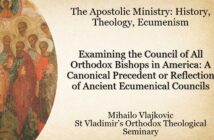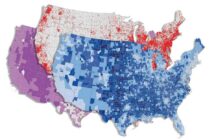Source: The Wall Street Journal
As thousands close across the U.S., lively new congregations are taking their place.
By Ericka Andersen
As thousands of churches close across the U.S., many fret about the inevitable decline of faith in American life. Congregational demise is troubling, but underreported data suggest that fear of a secularizing America may be overwrought. A religious renewal could be on the horizon.
It’s true that denomination-based churches—Methodist, Baptist, Episcopal, Catholic—have been on a downward slope for years. But nondenominational evangelical churches are growing in number, from 54,000 in 1998 to 84,000 in 2012, according to the Journal for the Scientific Study of Religion. Pew Research data show a similar trend continuing to the present, with steep declines among mainline churches as evangelical ones keep popping up. And 42% of these new congregations report growing attendance, data from Lifeway Research shows.
One reason for the success of the new evangelical congregations is their aggressive pursuit of growth, which they call “church multiplication”: A new church will commit to start several smaller churches in a short time. Dave Ferguson, president of the church leadership organization Exponential, tells me that church multiplication numbers are on the rise. In 2015 only 4% of churches were multiplying, according to research conducted for Exponential by Lifeway. Last year 7% were doing so. Each percentage point upward represents some 3,000 churches. Mr. Ferguson says that if this growth is maintained, “it will change the spiritual landscape.”
Those multiplication efforts aren’t only about increasing the number of churches. Fresh churches replacing and created from old ones, armed with modern ideas to attract and tend to a new generation of believers, can be exactly what a community needs.
“Sometimes churches die, and sometimes they should,” wrote Ed Stetzer of Wheaton College in 2018. “A new church, not a reboot of the old, should be started in its place.” The leaders taking Mr. Stetzer’s advice generally focus on creating churches that cater to specific needs. There is a church exclusively for employees of Disney World. Spanish-language services are more popular than ever. “House churches,” composed of neighbors meeting for informal services—usually in living rooms—are on the rise as well. Popular Christian leaders like Francis Chan, a former megachurch pastor who now advocates house churches, offer free training for this model.
Those with denominational affinity will be sad to see a certain kind of church fall away. But the success of new models shows significant groups of people looking for ways to live faithfully, albeit in a less structured way. Could this really signify a religious awakening?
Naysayers point to data showing millennials are significantly less religious than previous generations. Yet half of them are still in their 20s, and much of the reporting about their secular outlook ignores how age affects belief and practice. Every recent generation has experienced significant post-high-school drops in church attendance, but most wayward youths return after marrying and having children. Given that the average age for marriage has increased seven years since the 1940s, it’s too soon to dismiss millennials as godless.
And despite the rise of the “nones”—those who don’t identify with any religion—evangelical Protestants and Muslims are increasing in number. Christian and Muslim birthrates also outpace those of the nones, not that they should be written off anyway. The Billy Graham Center Institute found that this group is surprisingly open to attending church at a friend’s invitation, and most view faith as good for society. The largest population of nones are millennials, so these numbers offer a strong indication that many will return to faith and church in the future.
Much of the religious growth in America also stems from immigrant populations. Nestor Gudino, an immigrant from Argentina who opened a church in North Carolina, points to the power of the Hispanic church. “Everybody is putting their focus on the Hispanic community, even in the smallest towns, where sometimes there is more Hispanic population than you can even imagine,” he tells me over the phone. As the Hispanic share of the U.S. population grows, the percentage of practicing Christians should rise as well.
Complacency is dangerous, but it’s important to realize that religion in the U.S. is far from dead. With a vibrant, new church landscape on the scene, there will be no shortage of options to choose from as millions of Americans again find their footing in faith. A selection of churches may be dying, but their replacements are alive, well and regenerating in ways the American church has never seen before.
Ms. Andersen is a writer in Indianapolis.



